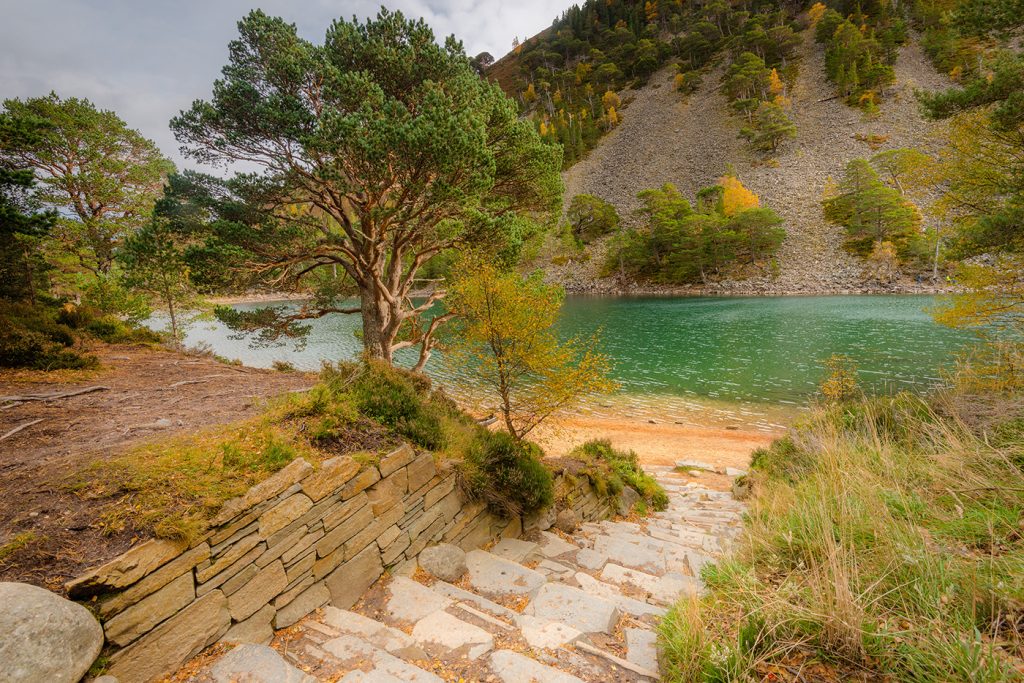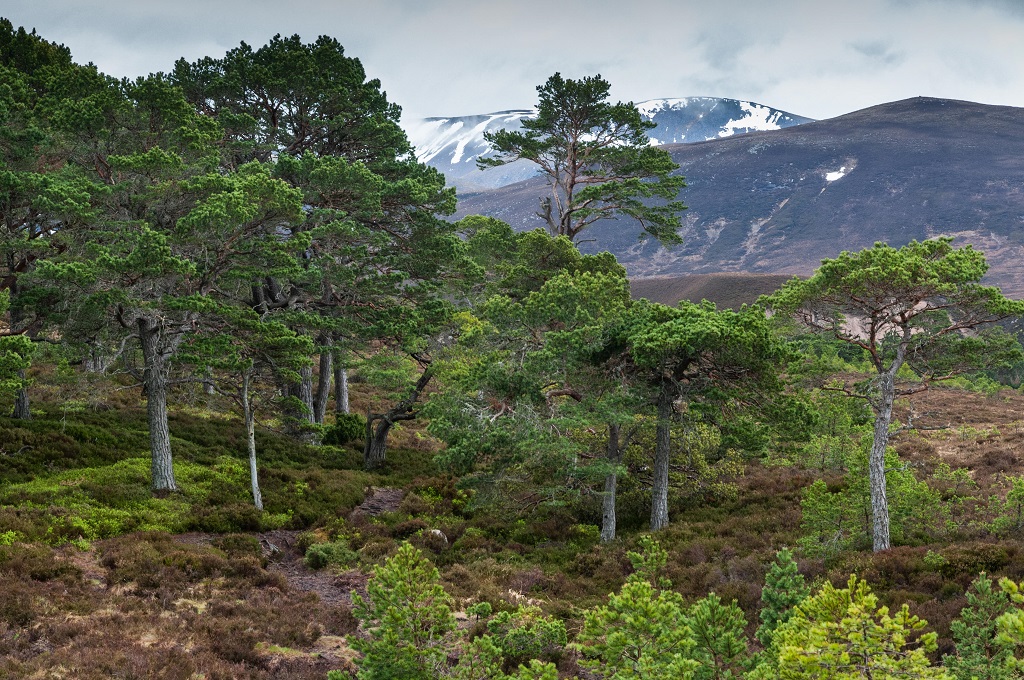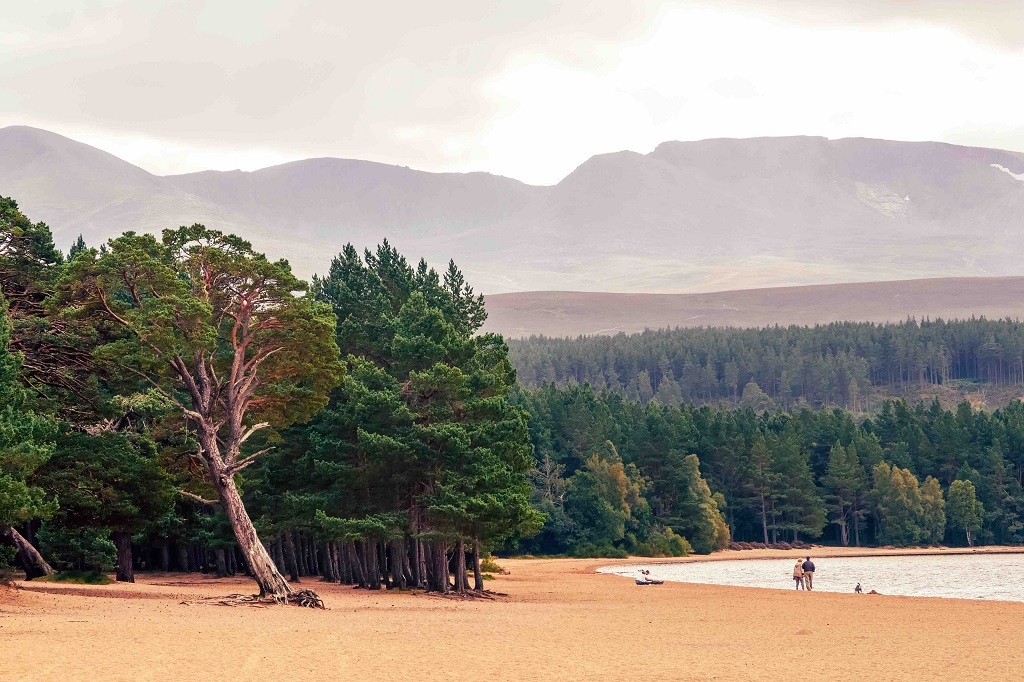More than a thousand visitors in the Cairngorms National Park have played their part in a major project.
They have contributed to ground-breaking research to unearth new insights into the motivations and values of millions of people that visit the area each year.
The innovative research, led by the Cairngorms Capercaillie Project funded by the National Lottery Heritage Fund, is now publicly available and aims to help those who provide for visitors to maximise the visitor experience in the National Park, in a way that helps our native species and natural habitats to thrive.
The research, which gathered the views of visitors to three highly designated forests in the Cairngorms that receive over 1 million visits a year, has revealed a significantly higher level of nature connectedness compared to other parts of the UK – with over 90% of respondents, including local residents, stating that they feel part of nature.
This is compared to findings from a Natural England survey last year, which found that only 58% of respondents feel part of nature. Experiences in the area’s unique landscapes alongside nature are the key drivers for people visiting.

Lochan Uaine
The report highlighted that more work is needed to help people better understand how they can visit the area responsibly. Pine marten, wildcat, red squirrel, golden eagle and capercaillie are the wildlife most people would be pleased to see, and nearly all respondents felt capercaillie should be protected for future generations.
The Cairngorms National Park is home to over a quarter of the UK’s rare and threatened species, including over 80% of the UK capercaillie population. Enabling visitors to enjoy the area responsibly is therefore critical to the area’s efforts to address the biodiversity crisis.
Johnnie Grant of Rothiemurchus, one of the leading partners in the research said ‘We know that we are responsible for looking after, and sharing a very special place which deserves and requires special treatment and the highest level of care and attention from us all. This research stands to help us all in our efforts to fulfil that responsibility..

Rothiemurchus pine forest
Commissioned by the Cairngorms Capercaillie Project, in partnership with Rothiemurchus, RSPB and Forestry and Land Scotland, the research was undertaken by Heritage Pathfinder from June to September 2021. More than 1200 visitors, including local residents, to Rothiemurchus, Abernethy National Nature Reserve and Glenmore Forest Park took part. The neighbouring landholdings in the heart of the Cairngorms National Park receive over one million visits a year and are highly designated for nature.
Now available for all to use at www.cairngormscapercaillie.scot/communities/visitors, the research results offer deeper insights into visitor types to enable those who manage for visitors across the National Park and beyond to plan more proactively to meet and exceed the needs of visitors.
Mark Tate, chief executive at Cairngorms Business Partnership said: ‘Our members recognise the vital role they play in ensuring that when we promote the National Park, as a special place to visit, we do so in a way that inspires people to enjoy it responsibly. It is clear from the research findings that people, from near and far, who come to enjoy our forests want to be responsible and feel connected to nature. The output of the research will help us do even more to inspire people to enjoy the Cairngorms in a way that benefits nature and our communities..

Loch Morlich, Glenmore
Abernethy senior site manager, Uwe Stoneman added: ‘Last year at Abernethy, we formed a visitor and access group together with local residents. At the group’s next meeting we’ll begin to use the research findings to help us better manage for visitors at Abernethy.
Laura McNally, area visitor services manager for Forestry and Land Scotland, said: ‘With this research and working with others, we can make it easier for all visitors to enjoy the area responsibly.
‘We can also work towards our vision to develop and maintain thriving capercaillie areas and high quality, sustainable visitor experiences. Achieving this vision will take time and the research is only the first step in the process, but we are extremely pleased to have reached this pivotal point together.’
Find out more about the Cairngorms National Park Authority at www.cairngorms.co.uk
TAGS

